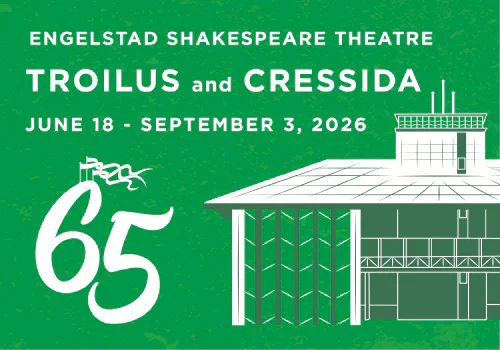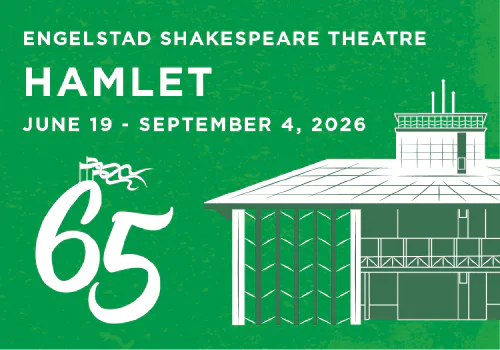OBJECTIVE
Students will demonstrate their analysis ability by examining and debating how Hamlet’s circumstances drive his actions and reactions.
UTAH CORE STANDARDS
- Reading: Literature Standard 1
- Reading: Informational Text Standard 6
- Literacy Standard L3.T.CO.1
INTENDED AUDIENCE
9th grade – 12th grade
TIME
60 — 90 minutes
MATERIALS
OUTLINE
-
HOOK
Have the students stand in a circle shoulder to shoulder. Ask the students, “With whom do you have relationships in your life? How are you connected?” Then toss a student a tennis ball (or, even better, a plastic skull!) That student responds with an answer and tossed the ball to someone else who responds, etc. until most or all have answered.As the students answer, suggest that the people around us and our relationships with them define us. As we try to determine who this character of Hamlet is and what his journey in this play is, we need to consider the people he is connected with.
Share and pass out the relationship web for Hamlet. On the web, you can see that the relationships are defined in the most basic, factual way (mother, lover, friend, etc.). But relationships are quite complex organisms, and exist in far more interesting ways than the simple labels will show.
Have the students create a relationship web for themselves on the back of their paper.
Have them consider: “Who are the people who have an influence on your life, and maybe, who has an influence on them?”
-
TRANSITION
Referring back to the Hamlet relationship web, look at the connection between Hamlet and his father. Last class was left off with a ghost. Have students ponder: Are ghosts good or evil in stories? Prompt students to give examples of each. In looking specifically at Hamlet’s father, do students think this ghost will be good or bad? -
MODELING
Review how the previous lesson highlighted the plot of the play was started because Hamlet had a task and objective. He needs to find the ghost of his father- use the film clip of USF’s Hamlet production to show one interpretation of this first meeting between Hamlet and the ghost of his father. -
INSTRUCTION
Clearly Hamlet achieved his goal of finding the ghost. But that was only the first step - see if students can share what his task or objective is now?A character arc is where a character starts (who the character is at the beginning), what the character wants, the journey they take, and where they end up. Point out that students will look at this arc in a simple way as we read more play text. Have students define Hamlet’s ‘want’.
Have students consider their first reaction to Claudius in the first scene we read last class: What do you think about him now after what the ghost reveals? Do you think that how Claudius speaks about Hamlet influences how willing Hamlet is to believe what the Ghost said?
Now have students think about other conflicts Hamlet might be facing in his arc in a Pair-Share. Encourage students to look over the relationship web, zero in on his connection to Ophelia, but also her connection to her father, and his connection to her father. Just as we are affected and influenced by others, Ophelia’s relationships might pull her in different directions, and her perception of Hamlet might be dictated by her relationship with her father.
In their pairs, have students read through the Ophelia and Polonius scene out loud. Together have them discuss how Polonius is trying to label Hamlet? Why would he be doing this?
-
INDEPENDENT WORK
Have the students return to the Hamlet relationship web. Have each student draw a box around Hamlet. They will be placing him in a cage. For the bars of the cage, have them write words of things that might make Hamlet, or someone in his situation, feel trapped - considering how people treat him or label him, his circumstances, etc. These bars can be based on things students have read, or discussed, or can be things they imagine might make him feel trapped. What about himself, his relationships, his feelings, his future, or his situation trap him? Make each line or description a bar of a cage. Have students share their cages with others in groups of three. -
INSTRUCTION
Continuing in the text, have students see if Hamlet reveals a bit about what HE thinks traps him.Review the purpose of prose in Shakespeare’s writing: Prose is straightforward, conversational; cerebral – imagination, wit, cleverness). The character can relax, be direct, chat openly with the audience. Character speaks prose if:
- Lower class
- Trying to appeal to lower class
- Shakes wants fun, easy conversation
- Wit-play
- “Common” situation
- Level one-on-one with audience
- More social in setting than formal
On the board, write VERSE and PROSE with a vertical line between them (creating a chart to be filled in). Contrast the writing of this scene (prose) with other scenes we have read (verse)- have students share what is different about this scene’s writing by suggesting items under each heading.
Characters can break from poetry to speak in prose for a few different reasons - they are lower class characters, there is comedy in the scenes that is easier conveyed in direct dialogue. But it can also make characters seem more realistic or profound.
Select students to come to the front of the room to read the Hamlet and Rosencrantz and Guildenstern exchange out loud. Once this is done, return to the “Denmark is a prison” exchange. What makes Hamlet’s existence a prison? Have students add to or adjust the prison bars they created earlier based on this discussion and their thoughts.
At the end of the exchange, Hamlet proclaims he is not mad. Is he?
-
DEBATE ACTIVITY
Divide the class in half. Each member of the class needs to argue this statement:
Hamlet is descending into madness.
Assign one half to “agree” with the statement and the other half to “disagree.” Give each half of the class a few minutes to formulate their debate, then have each side take two minutes to state the strongest argument for their side. After the debate has finished, have the students write their final conclusion: Hamlet is MAD or Hamlet is NOT MAD on their relationship web paper and hand them in.
ASSESSMENT
Students can be scored on their cage/prison drawings and on their participation in discussions and the debate activity at the conclusion of class.
ENRICHMENT
Video: Approaching Hamlet: Part 2










